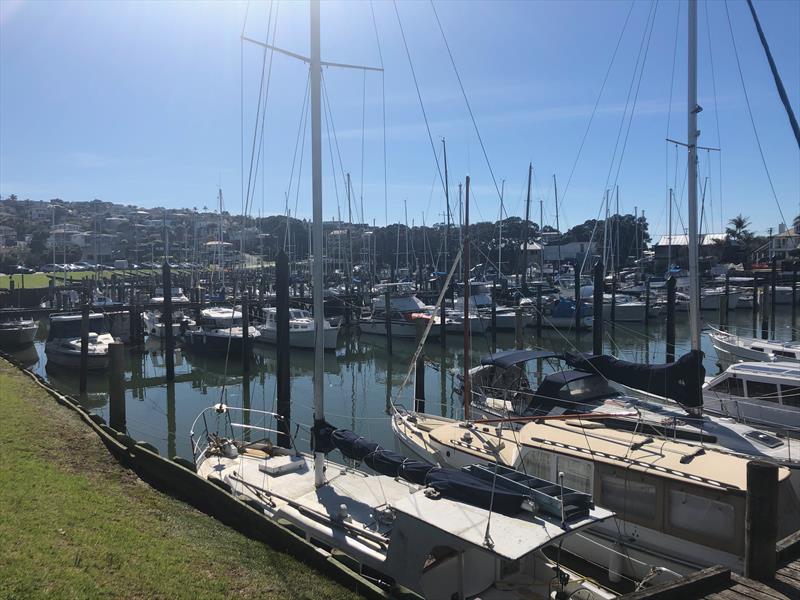
Marine Biosecurity: Plan B: Five alternatives to Antifoul
by Clean Below? Good to Go 21 Oct 2021 23:47 NZDT
21 October 2021

Milford Marina is located in Wairau Creek in Auckland. The fresh water in marinas like this one can help inhibit some marine growth © Marine Biosecurity NZ
Antifoul is considered our best line of defence against marine pests, but it's not the only option. From simply using your boat more often, to sophisticated technologies, here are some other options to consider.
Last week, we looked at how the industry is developing and innovating to create better, more effective antifoul coatings. This week we take a look at five other options for boat owners to consider.
Berth your boat in fresh water
If you are fortunate enough to have a fresh water berthage option, perhaps in a river entrance, this is a great way to keep most marine pests off your boat and its appendages. It should be noted that there are other types of biofouling associated with fresh water and these also need to be controlled.
Store your boat on the hard
Hardstand storage, a dry stack or a trailer are great ways to make sure that certain types of boats don’t get fouled. Here you need to ensure that your boat is thoroughly cleaned immediately after it comes out of the water in order to maintain the integrity of the antifouling coating.
Boat lifters
Have a chat with your marina operator about the possibility of a boat lifter. Options on the market include SeaPen, FloatLift, and Float Bricks. Brent says in his experience, the most effective ones lift the boat completely out of the water. Remember that the boat lifter device itself will also need to be removed from the water for cleaning and antifouling every 18 months or so – but your boat will be free of marine pests and ready to go on its travels.
A solution for underwater fittings
Propspeed and its family of foul-release products including Foulfree and Lightspeed, are developed in New Zealand and work effectively to control biofouling on propellers, shafts, struts, rudders, bow thrusters, keel coolers, swim platforms, transducers and underwater lights. Foul-release coatings use physical rather than chemical means to reduce fouling, typically by creating a surface that’s tough for marine organisms to adhere to. Propspeed can be also successfully used on composites such as on stabilizers, composite keels and rudders.
Silicone based antifoul coatings can be ideal for commercial boats
Products such as Silicone based antifoul coatings – which apply a low friction surface to a vessel are ideal for commercial boats which are constantly on the move, says Brent Wilson of Marsden Cove Marina, but unfortunately less effective on recreational boats.
“The silicone option is great but if the boat doesn’t move, it doesn’t matter what you put on it, something will grow.” Take note: silicone products are also easily damaged by cleaning as well as impact.
And finally… use your boat more often
Boats that move regularly stay cleaner than boats that sit still. A great way to help prevent biofouling is to use your boat more regularly (when lockdown levels allow). So, to help slow down growth, take it out for a spin! A harbour cruise. Or get out for a race. It keeps your maintenance costs down, and helps to reduces biocide resistance too.
This is Part 2 in our special antifoul series. The information expressed in this article is the opinion of those interviewed and not necessarily that of ‘Clean Below? Good to Go’. Please seek expert advice when choosing and applying an antifoul coating.
Get more info about marine biosecurity in NZ at marinepests.nz